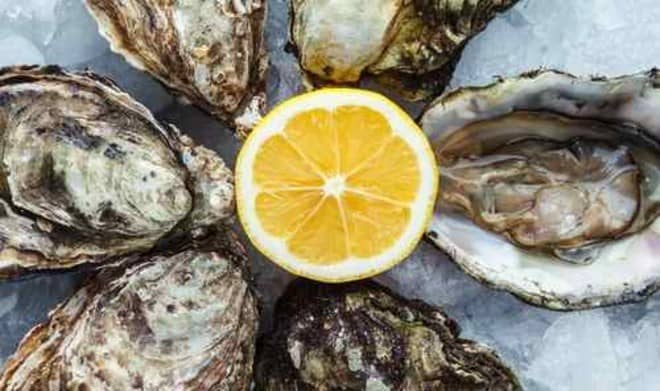For most of New York’s history, oysters have been an iconic part of the city’s food system. They disappeared from the harbor during the industrial revolution, but in the past few years they’ve made a comeback in local waters and are gaining popularity with city inhabitants.
When Henry Hudson arrived in what is now New York City in 1609, there were approximately 350-mi2 of oyster reefs in the harbor and its surrounding waters. At the time, experts estimate, that was likely more than half the oyster supply in the world. They were a major staple of Native American diets, and as a colonial city took form on the nearby island of Manhattan, European settlers embraced them as well.
According to Carmen Nigro, a local history expert at the New York Public Library, oysters were a classic New York City snack by the 1800’s. They had an international reputation, and ritzy oyster bars were frequented by New York’s wealthy upper classes. They were also, however, the city’s first real street food. Poor city dwellers could purchase them on the cheap from street carts, making them a staple of all New Yorkers’ diets.
By 1900, these populations were declining rapidly due to increased overfishing and water pollution—hundreds of gallons of sewage water were dumped into the harbor daily, and the oysters were making people sick. The last of the city’s oyster fisheries shut down in 1927, Mark Kurlansky, author of a book on New York oysters, told an interviewer on NPR. After that there were still oyster bars throughout the city, but most imported their products from New England. As decades passed, New York’s oyster legacy was forgotten.
But things are starting looking up for the city’s mollusks. In the past ten or so years, the oysters started reappearing in New York harbor in larger numbers. Now students, conservationists, and civilian scientists are banding together to help rehabilitate these organisms. According to Beth Ravit, an environmental researcher at Rutgers University, restored oyster reefs will create habitats for fish and crabs to improve biodiversity, as well as prevent soil erosion and help mitigate the effects of future storms in New York City.
Unfortunately, there’s a catch: these oysters still aren’t safe to eat. The 1972 Clean Water Act has made the New York harbor sanitary enough to support the growth and development of oyster populations, but these animals are still toxic due to pollutants in the waters. That includes heavy metals, PCB’s, and even napalm, says Kurlansky. These toxins are left over from decades of industrial waste dumping in the mid-20th century.
Instead, oyster farms and community-supported fisheries (CSF) around Long Island have taken up the torch to supply local oysters to New York City mollusk-munchers. Oyster farms such as the one on Fishers Island, in the Block Island Sound, and the Blue Point Oyster Company on Long Island raise oysters in hatcheries and then move them to open waters, where they are eventually harvested. CSF’s such as the Village Fishmonger operate in much the same way as CSA’s: restaurants and specialty food stores buy in, then take whatever product fishermen are able to harvest sustainably. These fisherfolk, it turns out, are able to pull up plenty of oysters.
As a result, New Yorkers can keep slurping these salty treats sustainably at oyster bars throughout the city. In the meantime, scientists continue to work with oysters in the New York harbor that may, one day, be safe to eat.
Sign up for Food Tank’s FREE Weekly Newsletter. More than 110,000 Subscribers And Counting. Click HERE to join.











